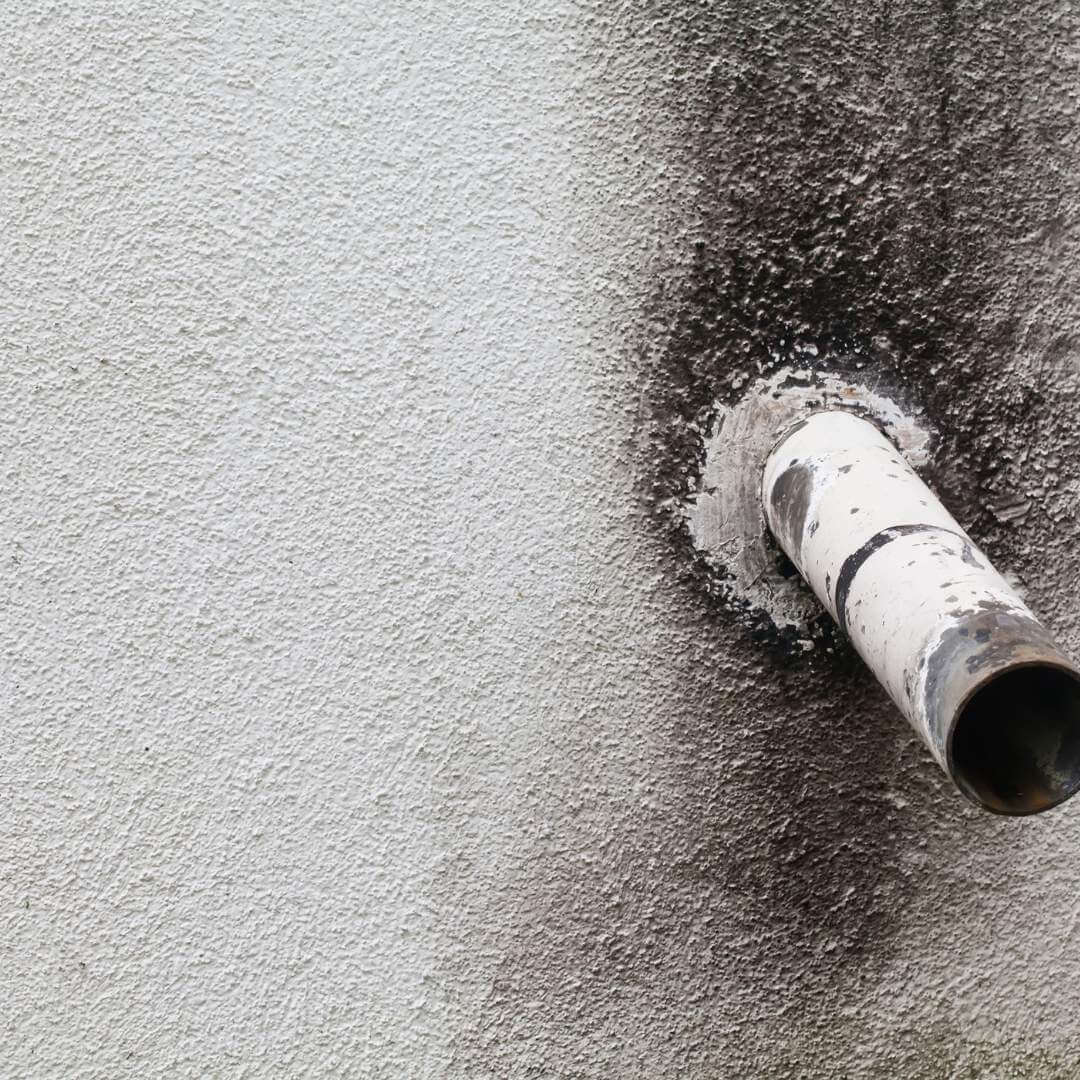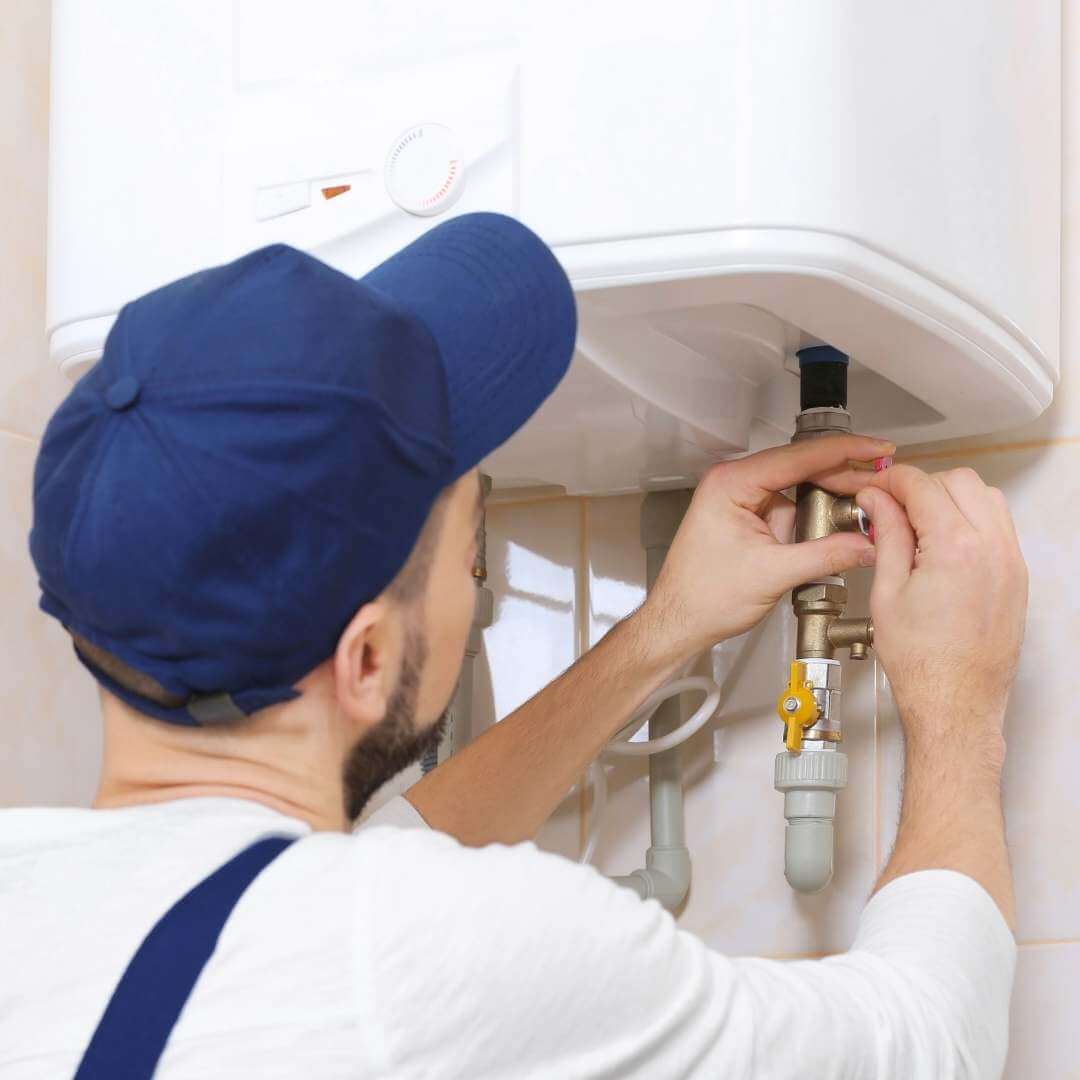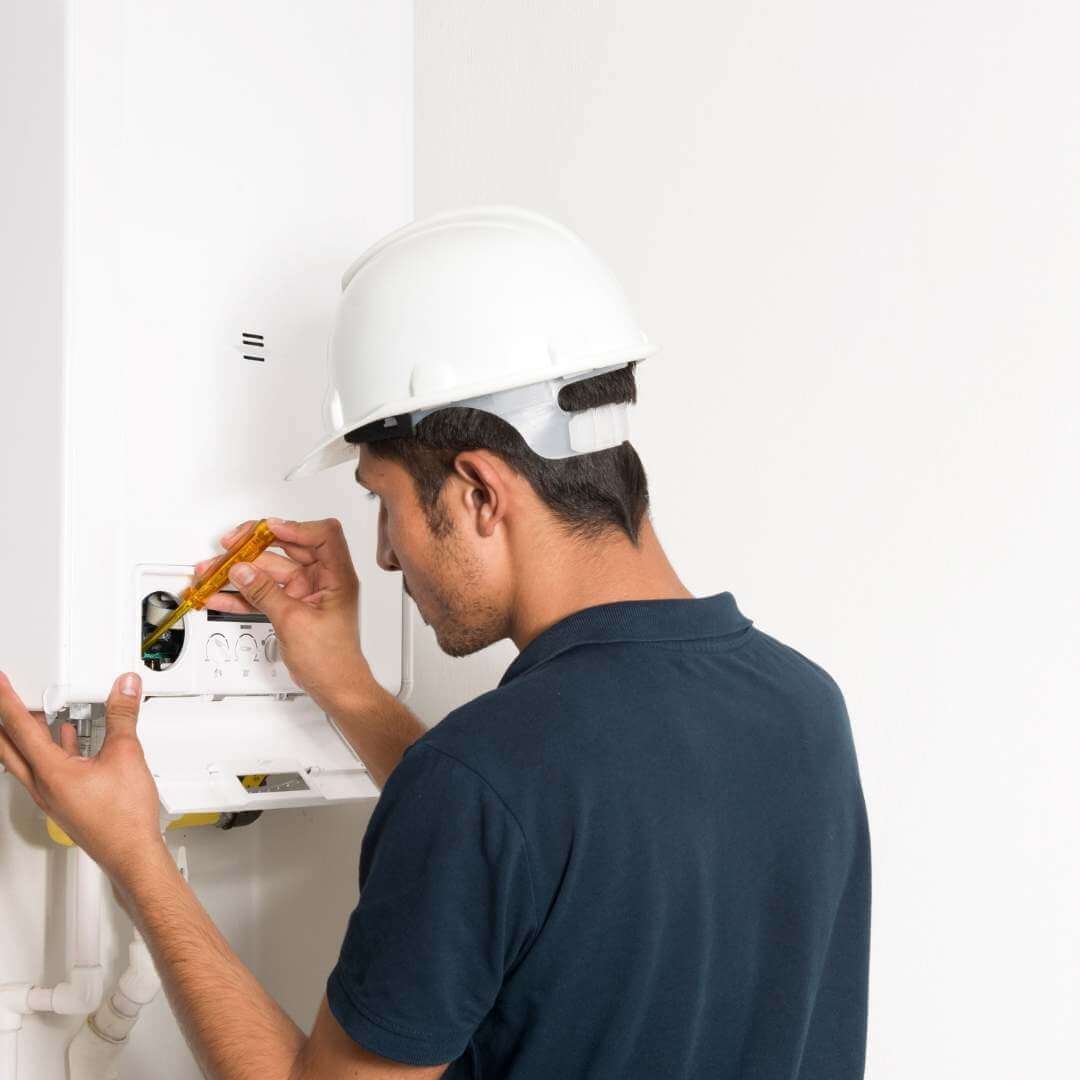You anticipate constant efficiency when you purchase a water heater. Sadly, those expectations won’t always be fulfilled. Overflow is a result of internal issues that water heaters acquire over time. This post will explain the possible causes of your hot water heater draining outside. We’ll outline potential fixes for this issue as well.
What Is An Overflow Pipe?

Your home’s heater or water storage tank has an overflow pipe that drains to the outside. It is an important component of the plumbing system in your house. If the heater’s water level rises beyond the recommended level, the extra water drains out the door and through the overflow pipe rather than spilling into the space.
The temperature and pressure relief valve is used to accomplish this.
A temperature and pressure release valve relieve pressure on the water heater, as the name implies. The relief valve in your water heater will open if the water temperature surpasses 210oF or the internal pressure exceeds 150 pounds per square inch PSI [1].
When it opens, hot water rushes through the valve drain pipe and out of the water heater. This release stops the water heater from bursting because of too much pressure and heat. Therefore, you must always ensure that your temperature and pressure relief valve is functioning properly.
Water heater overflow pipe requirements
To avoid potential damage to property, the International Residential Code (IRC) stipulates the following overflow pipe restrictions.
- Although an air gap situated in the same room as the water heater can be utilized to connect to the drainage system, the discharge pipe cannot be directly linked to the home’s plumbing drainage system.
- The pipe must run full size (no reductions) to the termination and cannot be smaller than the valve’s outlet.
- No discharge piping from any TPR valve may be shared with other equipment or devices.
- The discharge pipework can be terminated to a waste receptor, water heater pan, ground or outside
- The pipework must discharge without harming or damaging anything.
- It must end in a place where the homeowners may see it easily.
- The pipework must discharge naturally and without being obstructed.
- The TPR drain pipe must be terminated more than six inches, or less than two pipe diameters, above the floor, the ground, or the flood rim of the waste receptor.
- The piping’s end cannot have a threaded connection.
- The piping has no valves or tee fittings.
- Pipe must be made using authorized materials.
- If the relief valve outlet is on PEX or PE-RT tubing, the discharge pipe must be one nominal size larger.
Water heater drain valve dripping

Your water heater’s drain valve may be dripping with water. This typically means the valve is broken or the water heater is failing [2].
Even though the leak may occasionally be very sluggish, you shouldn’t disregard it. The hot water tank’s total water capacity will overflow into your basement if the drain valve malfunctions.
Opening the water heater drain valve is a standard maintenance procedure to remove accumulated sediment. This may involve draining the hot water from the tanks. But before thinking the drain valve is the cause of the leak, it’s always a good idea to find out where the water is coming from. This will ensure that you are dealing with the actual source of the problem.
Hot water heater only puts out warm water
Nothing else can get you going in the morning like a hot, steaming shower. Therefore, it is highly upsetting if the heater only produces tepid water instead of hot water.
Here are a few reasons why this might be the case:
- Power outage or circuit breaker trip
- Defective thermostat
- Sediment buildup in the heater
- Ineffective water heaters
- Broken dip tube
- An outdated water heater
Dangers of a leaking overflow pipe
Overflow pipe leaks may not require immediate attention. However, if your water heater leaks hot water rapidly or continuously, there may be a serious problem.
The first danger is being scalded by water from the heater. Hot water can cause serious burns, even at the recommended level of 120oF. An overflow pipe leak may also flood your home with water if not addressed in time.
Your best option in such circumstances would be to contact a reputable plumbing service. However, if you have the necessary gear to stop the leak without getting hurt, you can try it.
Causes of High Pressure in Water Heater
The temperature being set too high is one of the main reasons for excess pressure in the water heater. 140oF is the standard temperature established by the manufacturers. It is sometimes lowered to 120oF users.
This is safer for most individuals, and it provides you some leeway to prevent it from getting too hot. The Department of Energy (DOE) recommends setting it to 120oF .
Personal safety is one of the main justifications the DOE gives for making such a recommendation. Scalding is a real possibility at 140 degrees. You should be concerned any drain where water exists is released at such a high temperature.
Beyond security, energy conservation is the other reason to the water at 120oF. The DOE calculated that you might waste up to $60 in standby heat losses and $400 in demand losses per year if you keep the temperature higher. Therefore, maintaining a temperature of 120 will result in fewer leaks.
Water pressure from an incoming supply can also exert pressure. Different pressure settings are found in the water systems that feed the cold water inlet. According to the law, there should be an average water pressure of 80 PSI.
Some heaters can operate at pressures of up to 100 PSI. 100 PSI is excessive and might seriously harm the heater, particularly if the pressure is sustained. Water gets heated to a high degree when it is under the pressure of up to 100 PSI. As the temperature increases, the pressure also rises, either draining or beginning to harm the heater.
Consider purchasing a pressure-reducing valve if you cannot change the water pressure. Additionally, you should always keep a pressure gauge close to check the pressure. When the pressure gauge is inserted into the hose bib, the operational pressure will be displayed.
How to Fix a hot water heater draining outside

- Cut off the gas or electricity.
If the overflow is not significant, the space beneath the water heater shouldn’t be submerged in water. However, you should immediately turn off the gas or electricity supply if there is water nearby because the water heater probably doesn’t have any water.
- Check for leaks in the heater.
Look out for any leaks near the valves. Flip the T&P valve to reduce pressure in the heater if there is a leak and the heater is off
Flip it slowly, though. Most T&P valves will be damaged if you flip them too rapidly. If there is a leak, you might need to re-thread the valve with a plumber or Teflon tape.
- Clean out the valve of any debris.
In most cases, debris jams the primary seal. Turn the valve on and off repeatedly to see if any debris obstructs the seal. The overflow pipe should drip water. Flushing ought to get rid of any deposits around the seal. An essential first step in solving the issue is inspecting the valve’s seal.
- Reduce pressure Throughout the System
Activate the hot water faucet to release the heater’s pressure. It should only flow briefly because the cold water input is shut off. Open the heater’s overflow valve right now. Then, connect a garden hose to your home’s drainage system or the outside of the building to direct water. Give the overflow a minute to run its course.
- Change out the Overflow Pipe
You might need to cut the overflow pipe off depending on how it was installed. Then, install a new, sediment-free valve after removing the old one and the overflow pipe. Finally, use Teflon tape along the thread while reattaching the overflow pipe.
- Confirm that Every Fitting is working properly
Check the tightness of your valves one last time. Next, examine the overflow pipe and reopen the cold water inlet. To report a leak, dial a plumber’s number.
- Close all active faucets
The open taps should have all the air and pressure released by now, so close them. Let the water in the heater fill up. Keep the cold water inlet closed.
- Turn the Heater On
Resuming regular heater operations requires turning on the heater’s main breaker. Before turning on the gas or electricity, ensure the heater is filled with water.
Signs of a deteriorating Water Heater
Did you know that regular maintenance might help you avoid any water heater malfunctions? Heaters rarely stop working without any prior notice. To determine what has to be fixed, watch out for these indicators.
- Constant leaks – A water heater with persistent leaks is likely experiencing structural or mechanical issues. For example, the tank or the valves may be the source of the leak. When you find leaks from several locations, you need to address a more serious issue. Fortunately, with the right materials and tools, most leaks can be fixed.
- Less hot water – Is your hot water supply depleting more quickly than it used to? It can be a symptom of significant silt buildup. The amount of water in the water heater decreases as sediment accumulates. Even the hot water outlets may be spewing out tiny bits of silt. Your heater has to be flushed.
- Inconsistent water temperature – Tankless water heaters may experience inconsistent water temperature. It indicates that either the heater cannot heat the water quickly enough or the flow rate from the source is too low. In contrast, variable water temperature in heaters with tanks indicates faulty thermostats or broken water heating elements.
- Discolored water – If you find that your water is discolored, there’s a likelihood that the heater’s anode rods are failing. It could also mean that the tank is rusting from the inside. Normally, water contaminants are drawn to the sacrificial anode rod. The corrosive minerals in the water start to eat away at the inner steel lining of the tank if the anode rod is not changed when it degrades.
- Strange noises – A wide range of potential issues might be signaled by strange noises. To identify the primary problem, you would need to look more closely. For instance, mineral deposits could be clogging valves in your water heater and overloading it. It could also indicate that your water pressure is varying. The worst-case scenario is when the heater’s internal components have malfunctioned and need to be replaced.
- Variable pressure from the outflows – The heater’s internal systems may be deteriorating, worsening the low water pressure. In addition, sediment accumulates quickly, frequently obstructing pipes and interfering with the pressure mechanism. Check your heater if you are experiencing low flows despite the main water supply’s pressure remaining steady. It might be the point of failure and may require maintenance.
Related: Why Am I Not Getting Hot Water From My Tankless Water Heater
Conclusion
Routine maintenance inspections are an additional duty that comes with owning a water heater. The distinction between a few straightforward DIY solutions and pricey replacements is how frequently you monitor the pressure and temperature in your system. The nicest aspect is that the grunt work is not your responsibility. Instead, a home inspector is well-qualified to check your system and provide expert advice on what to do.

Michael Davis is a heating & plumbing expert who currently works as independent contractor in SC. He also writes for Plumbertip.
For almost 10 years he worked on various plumbing tasks across South Carolina.


